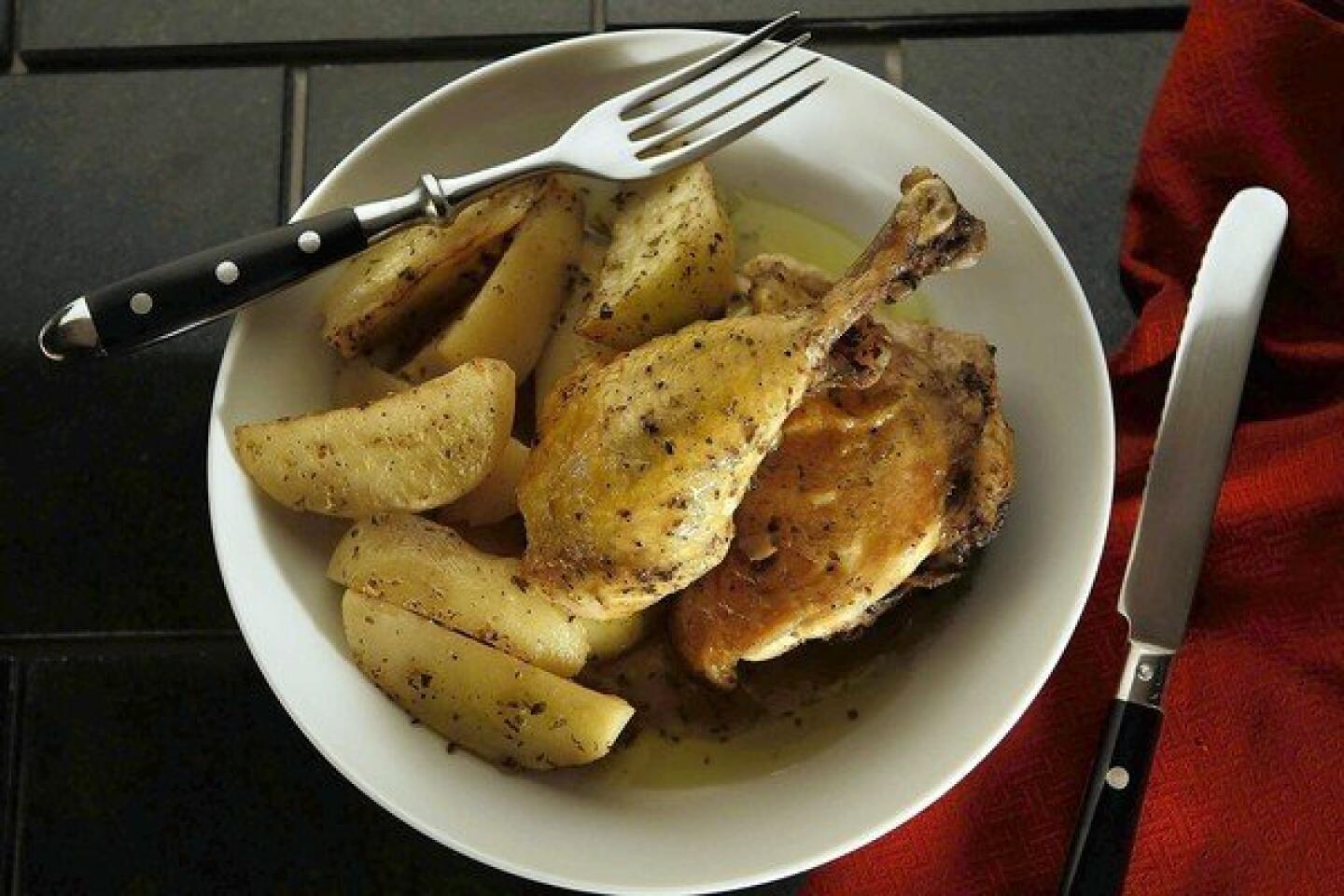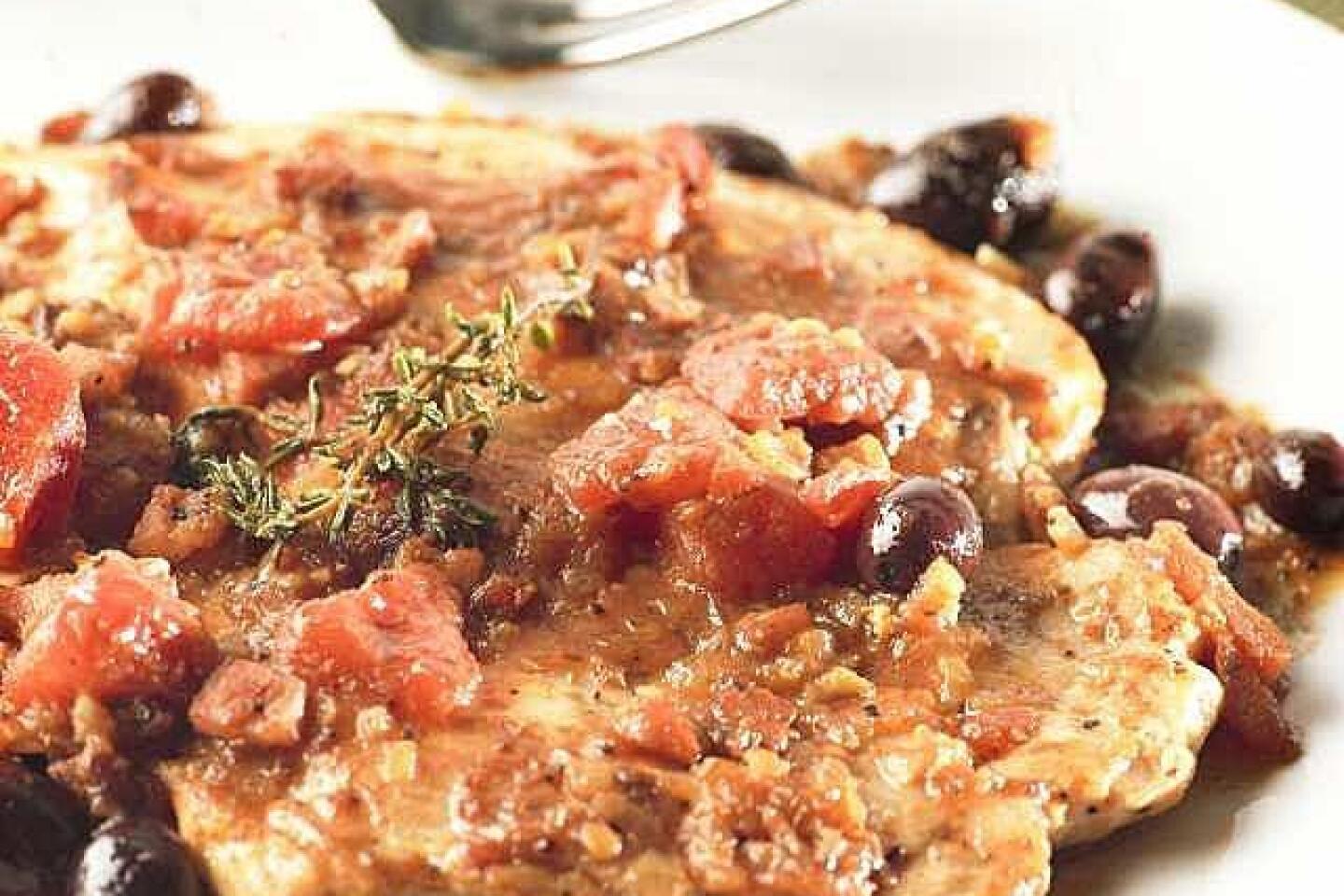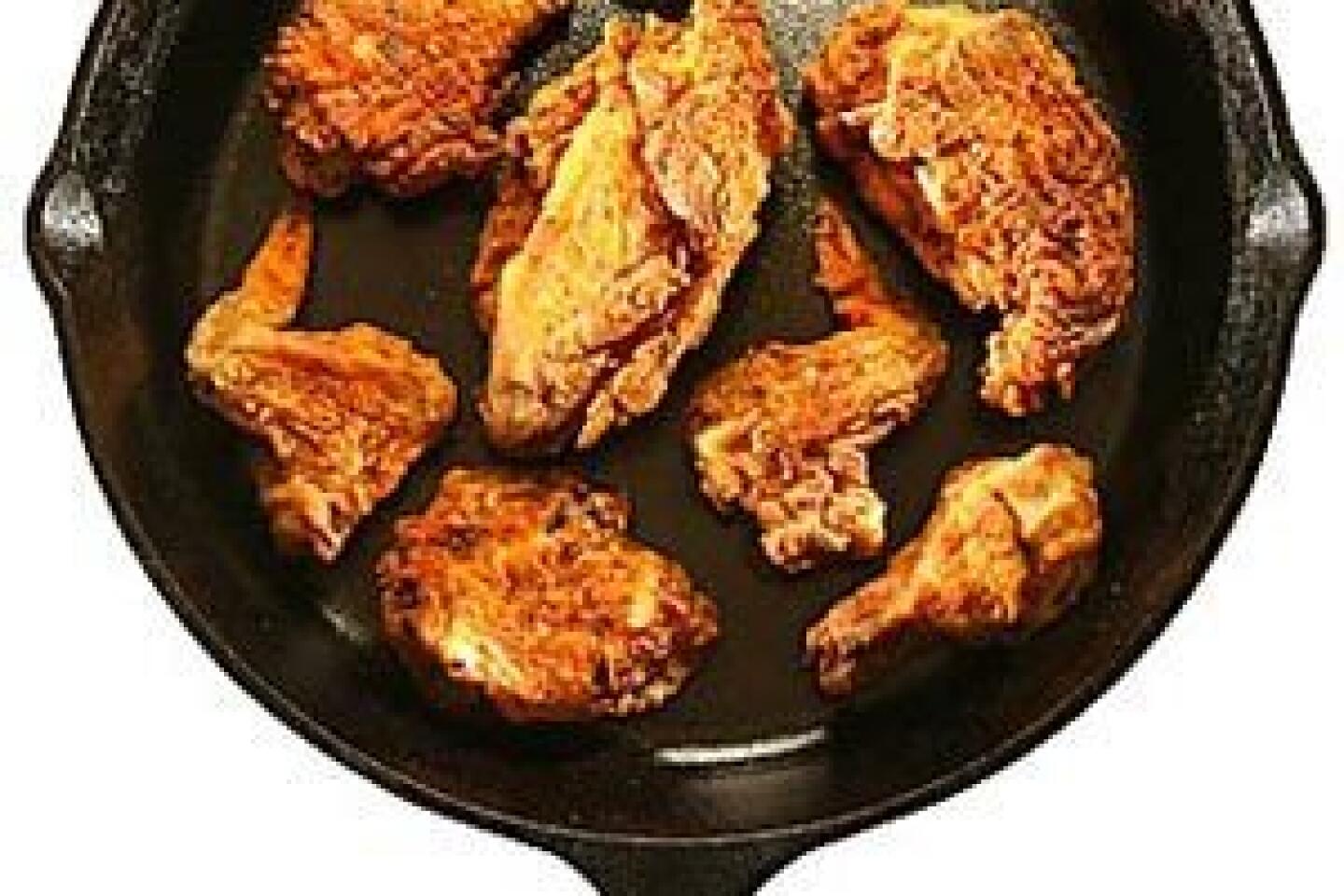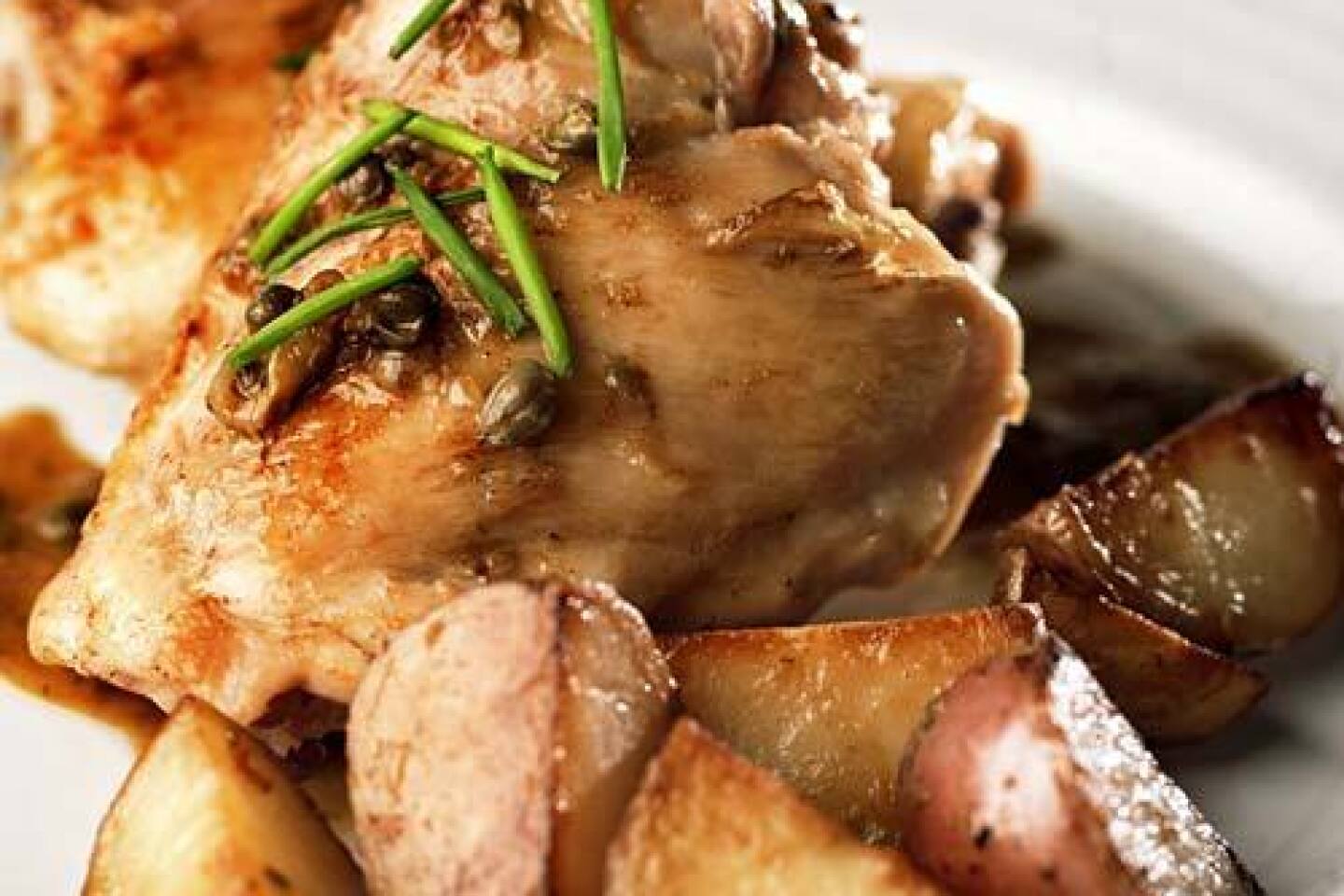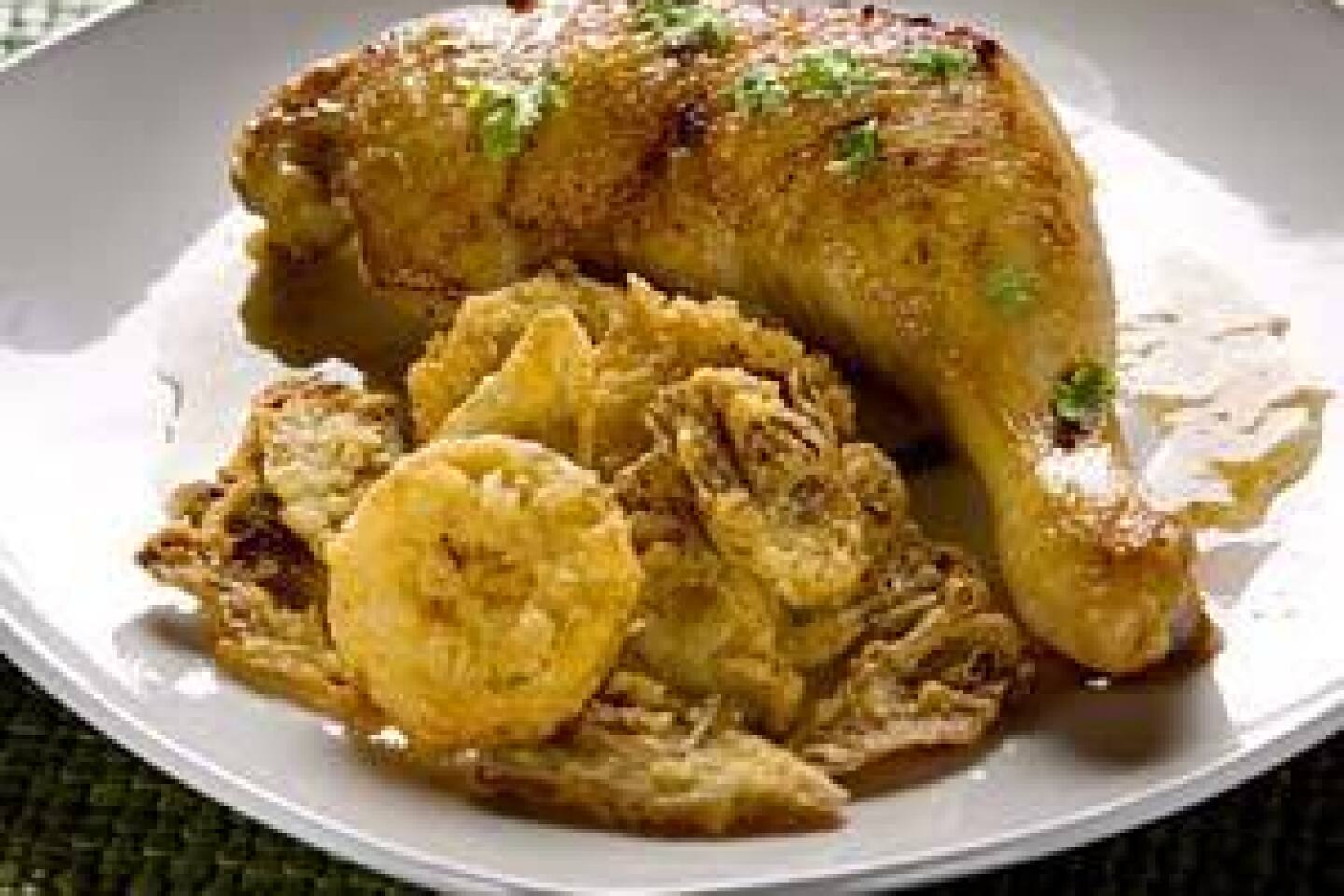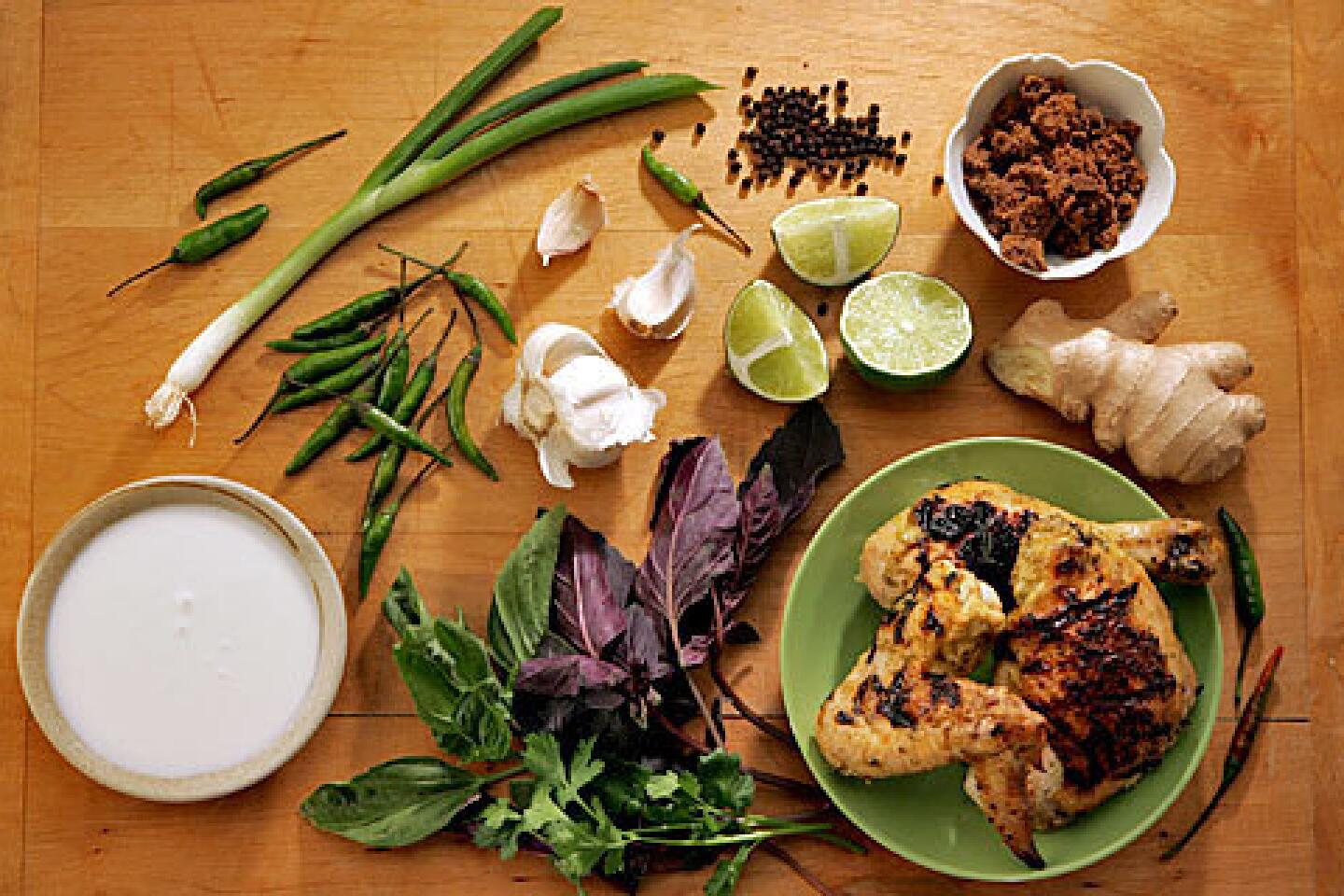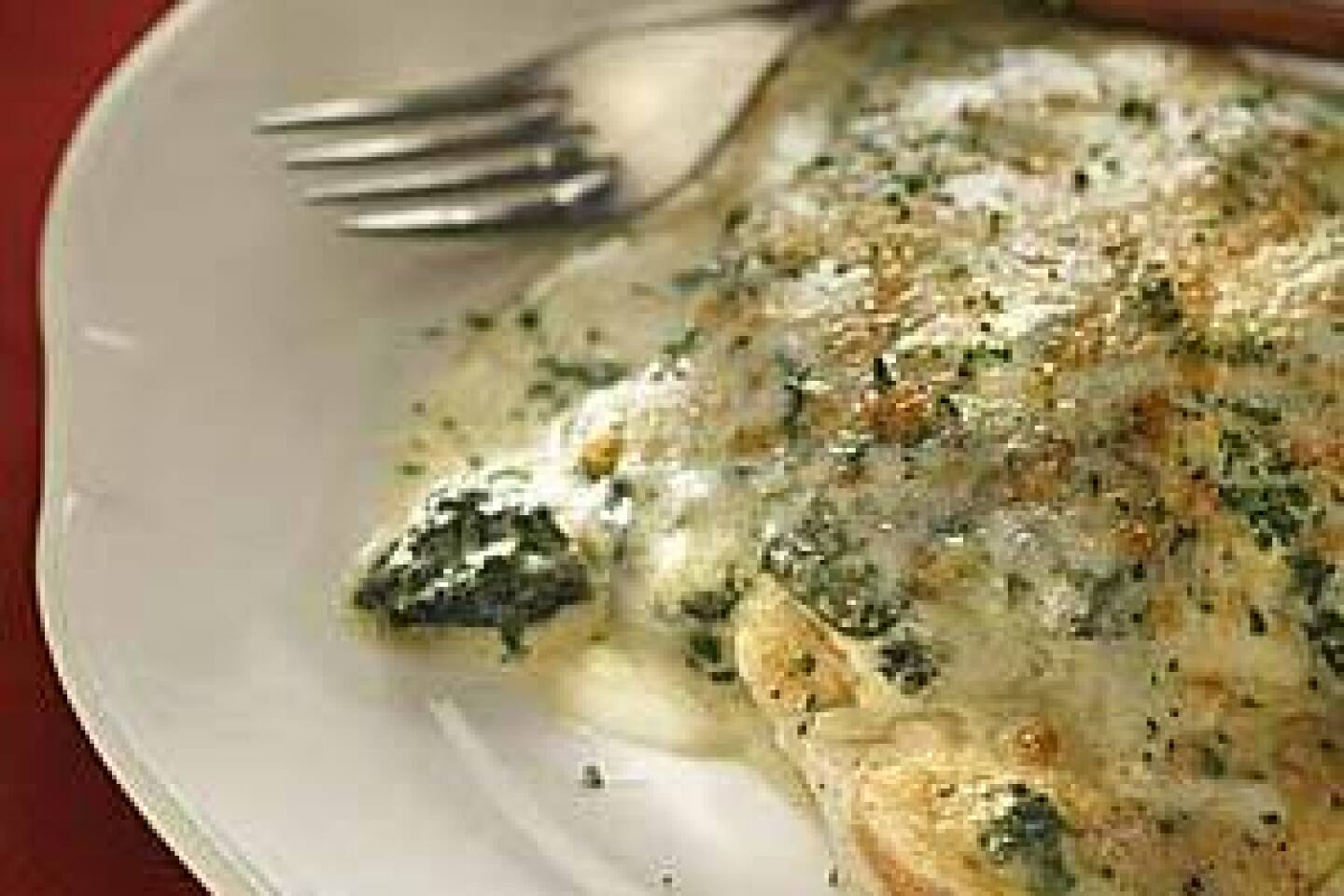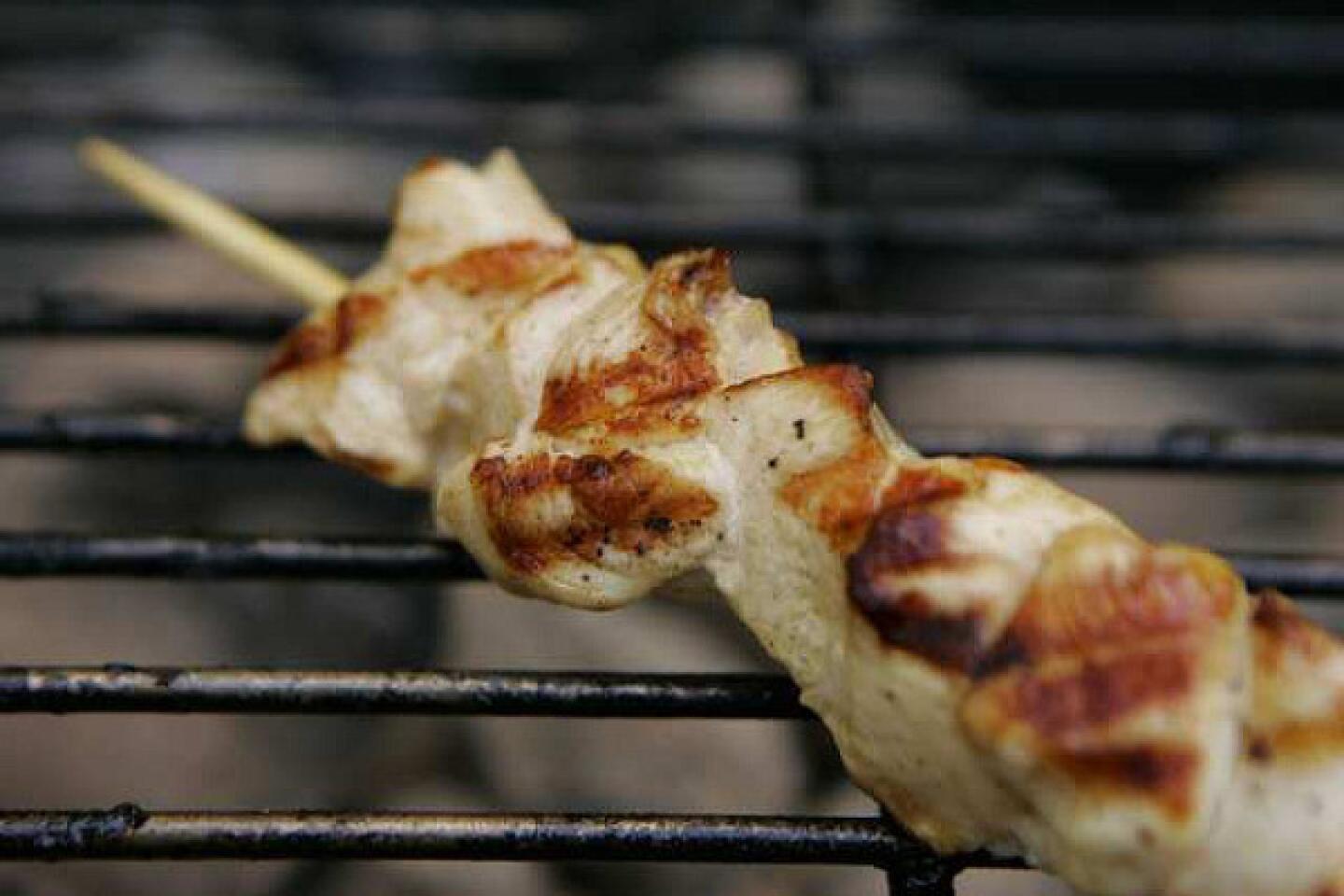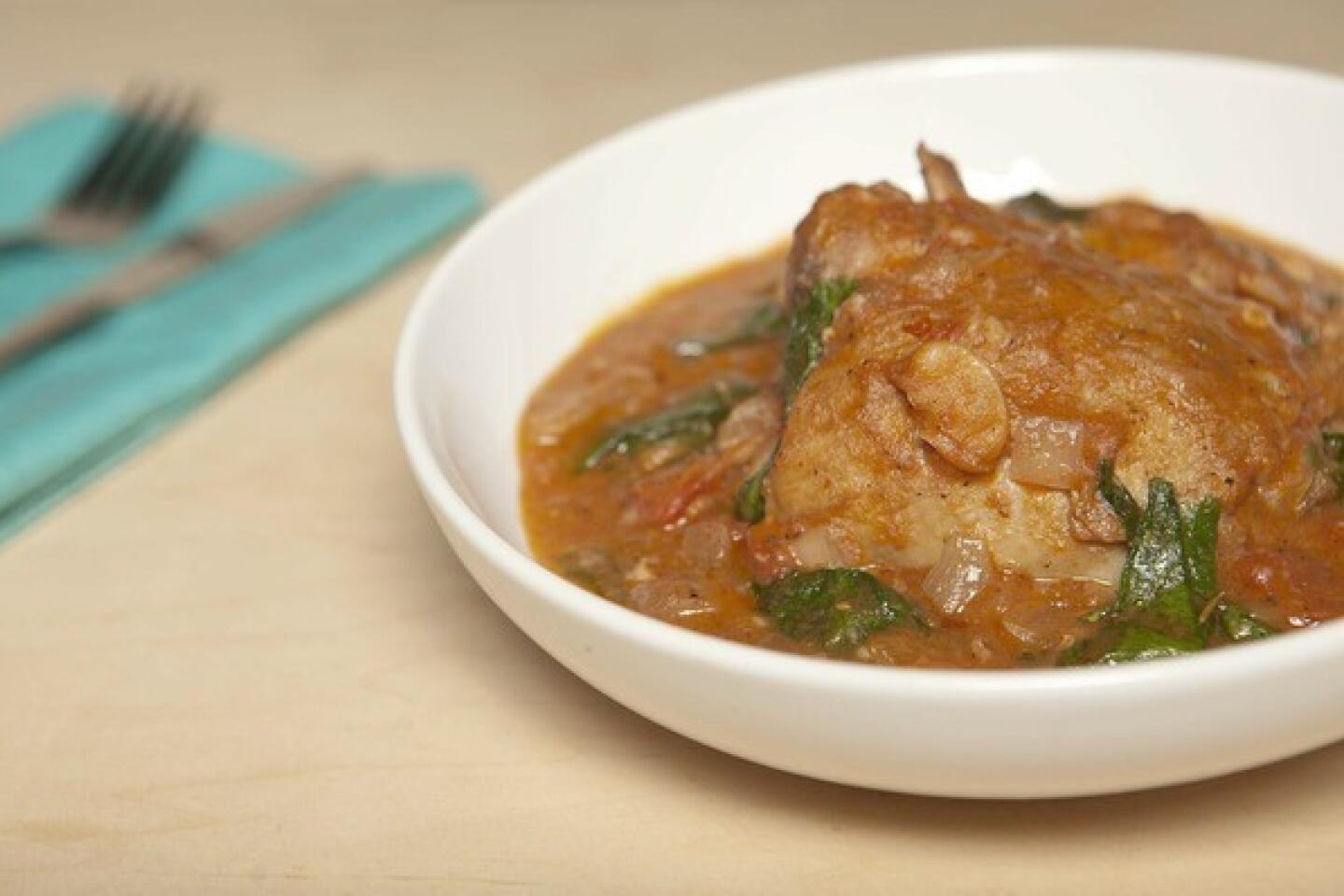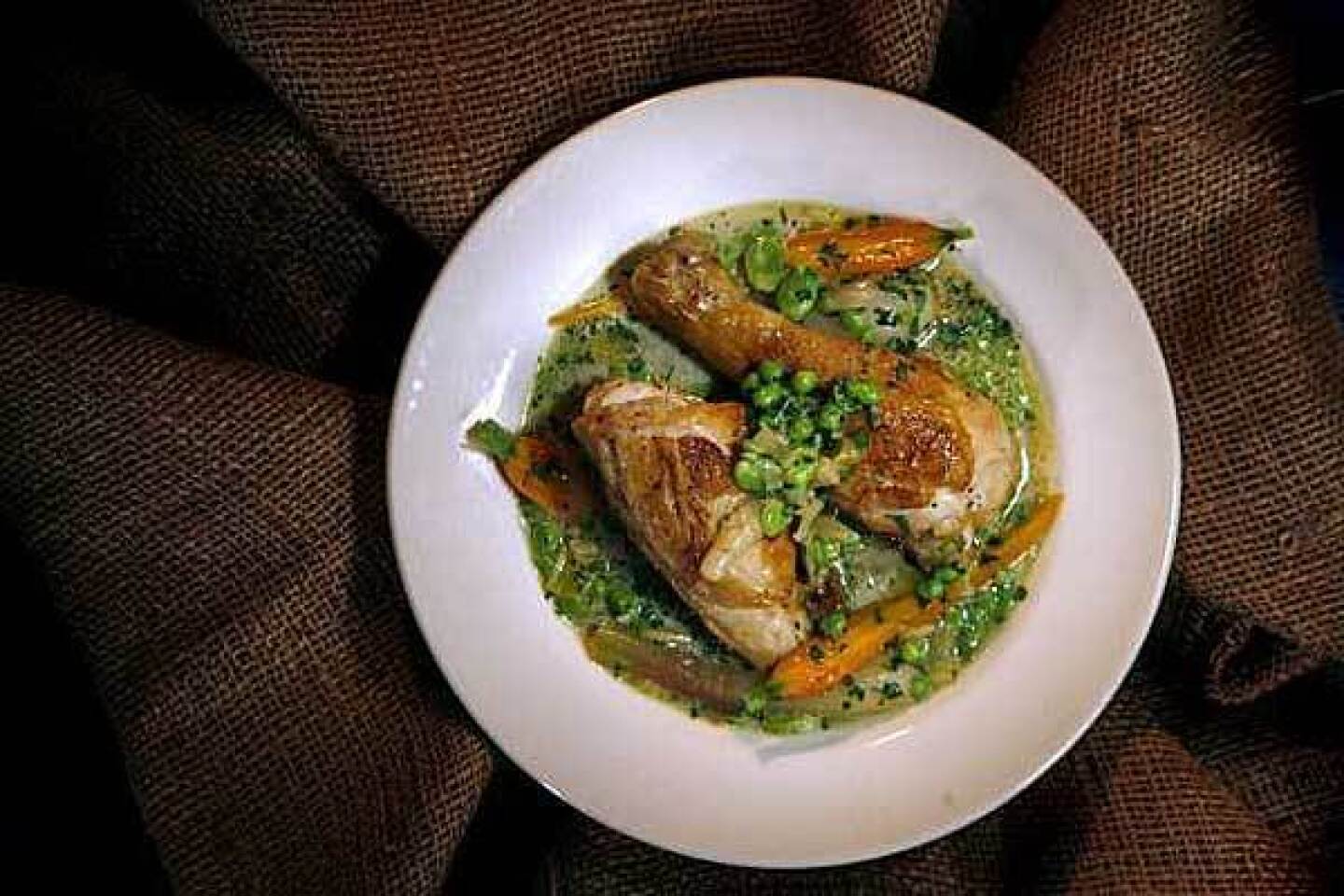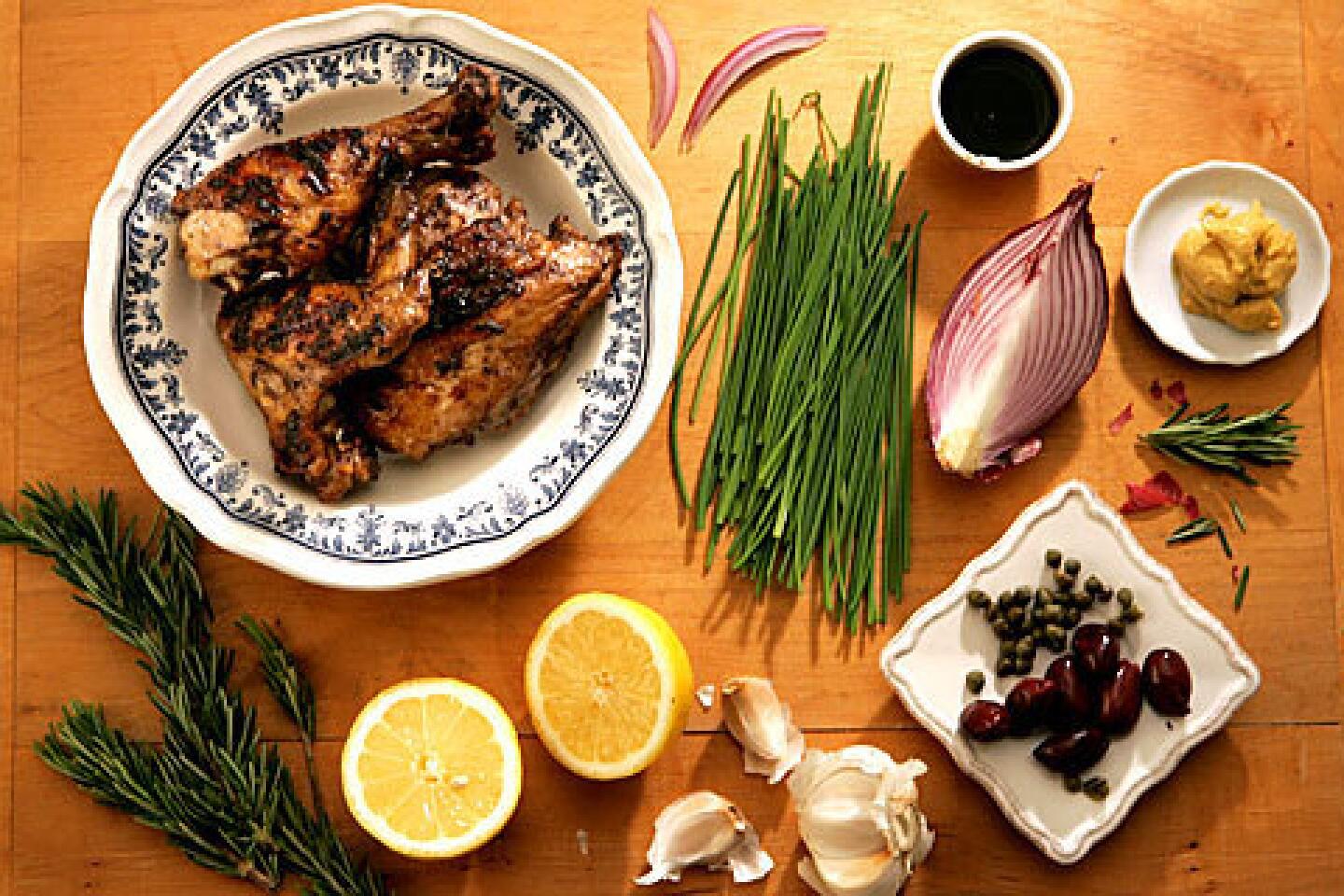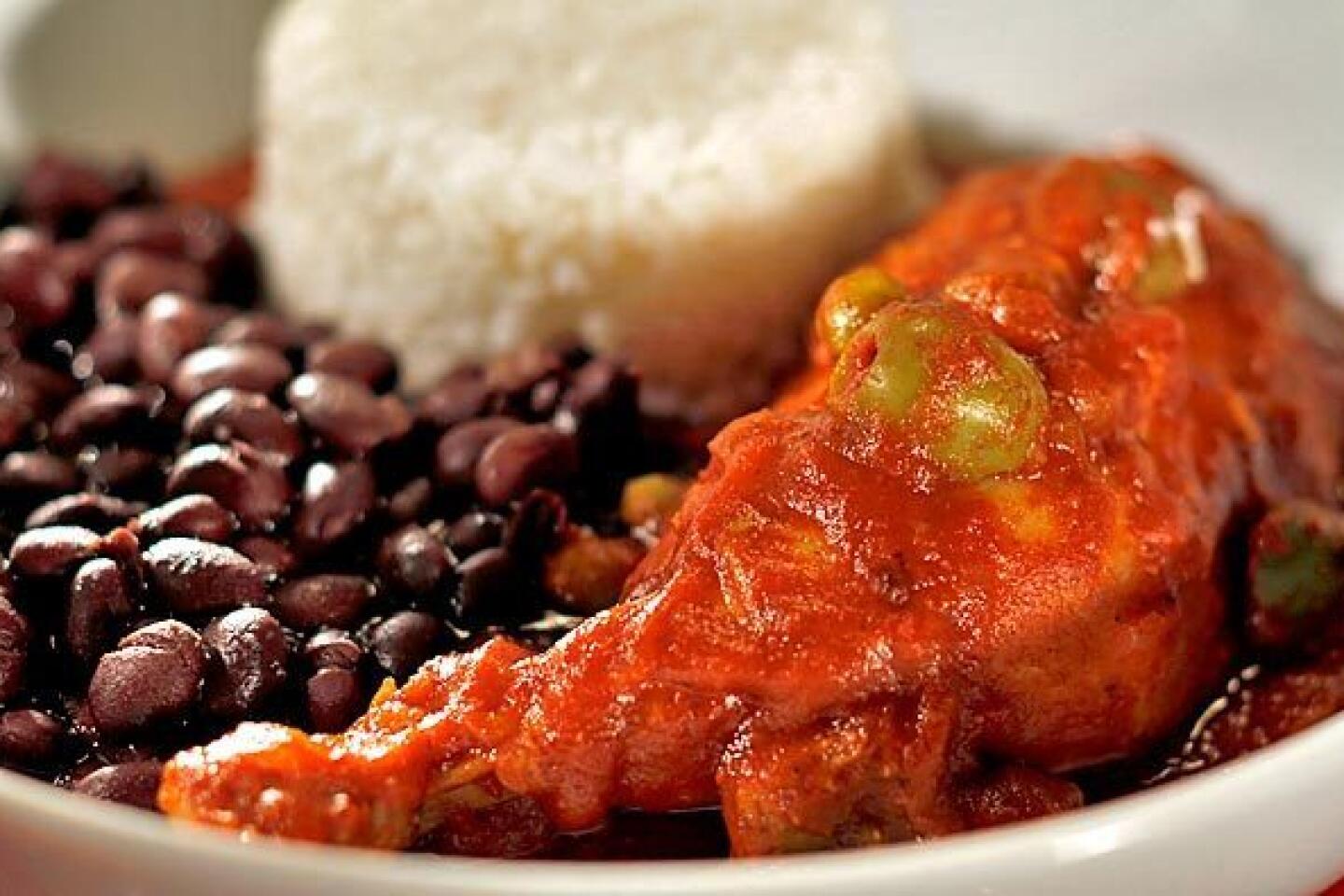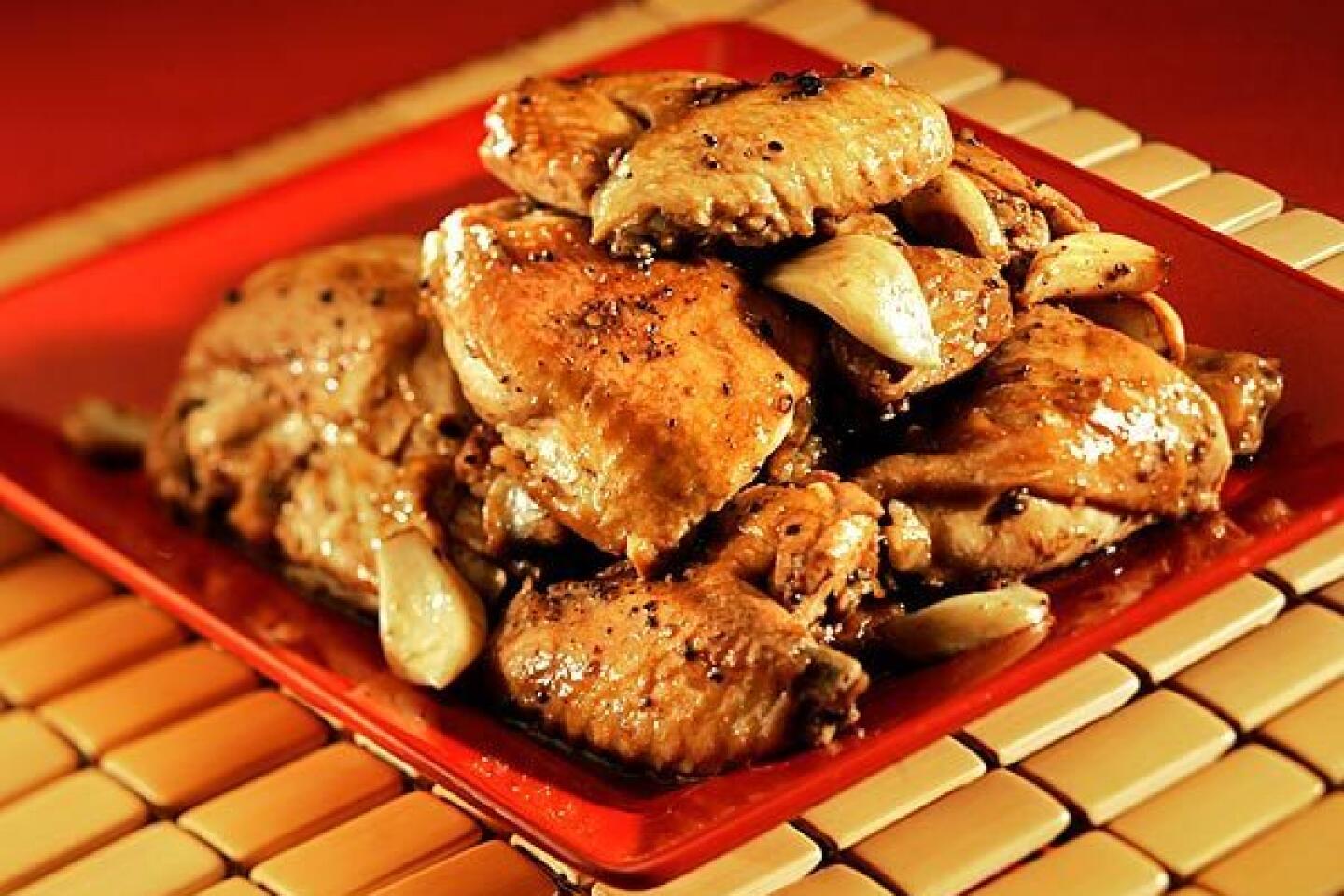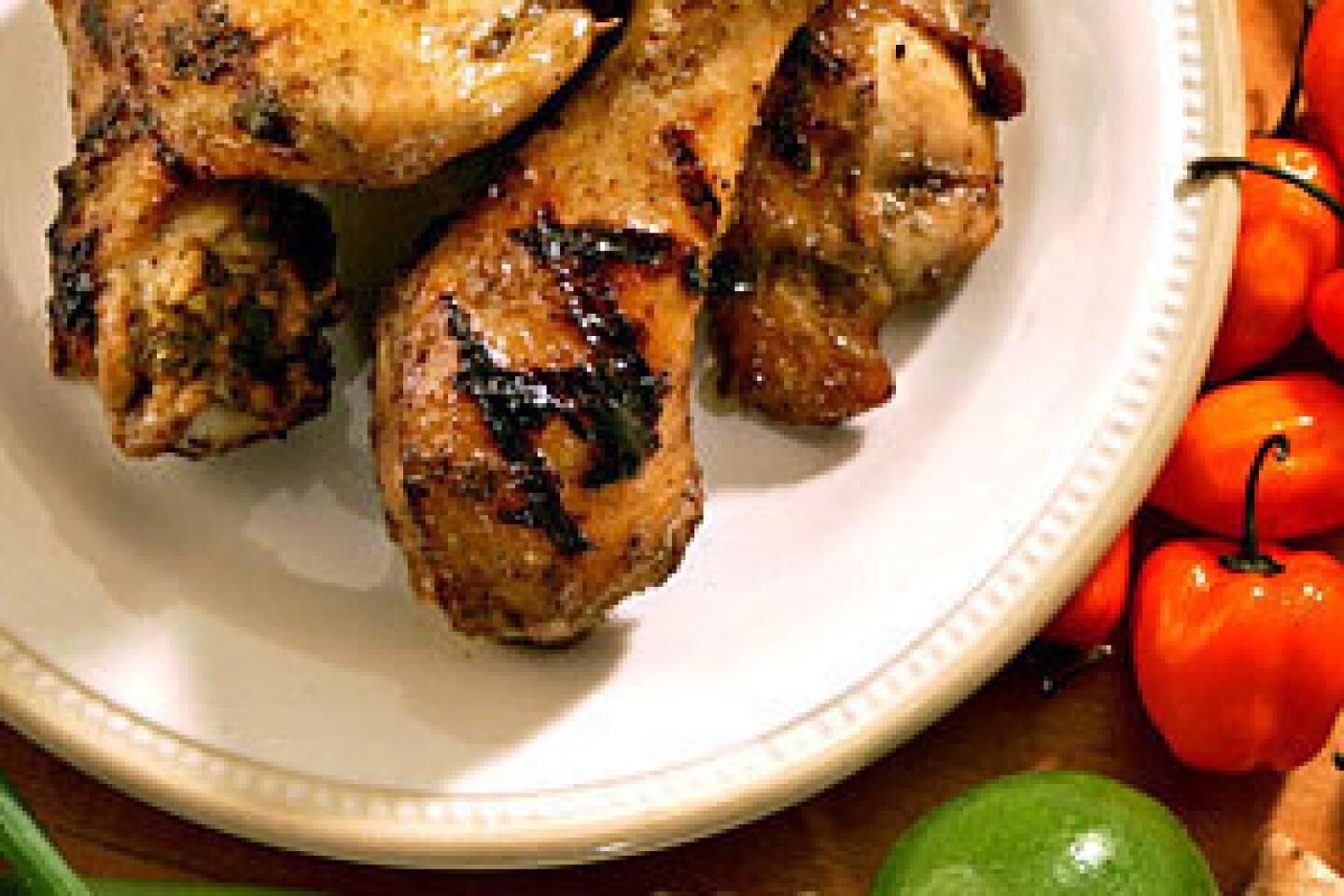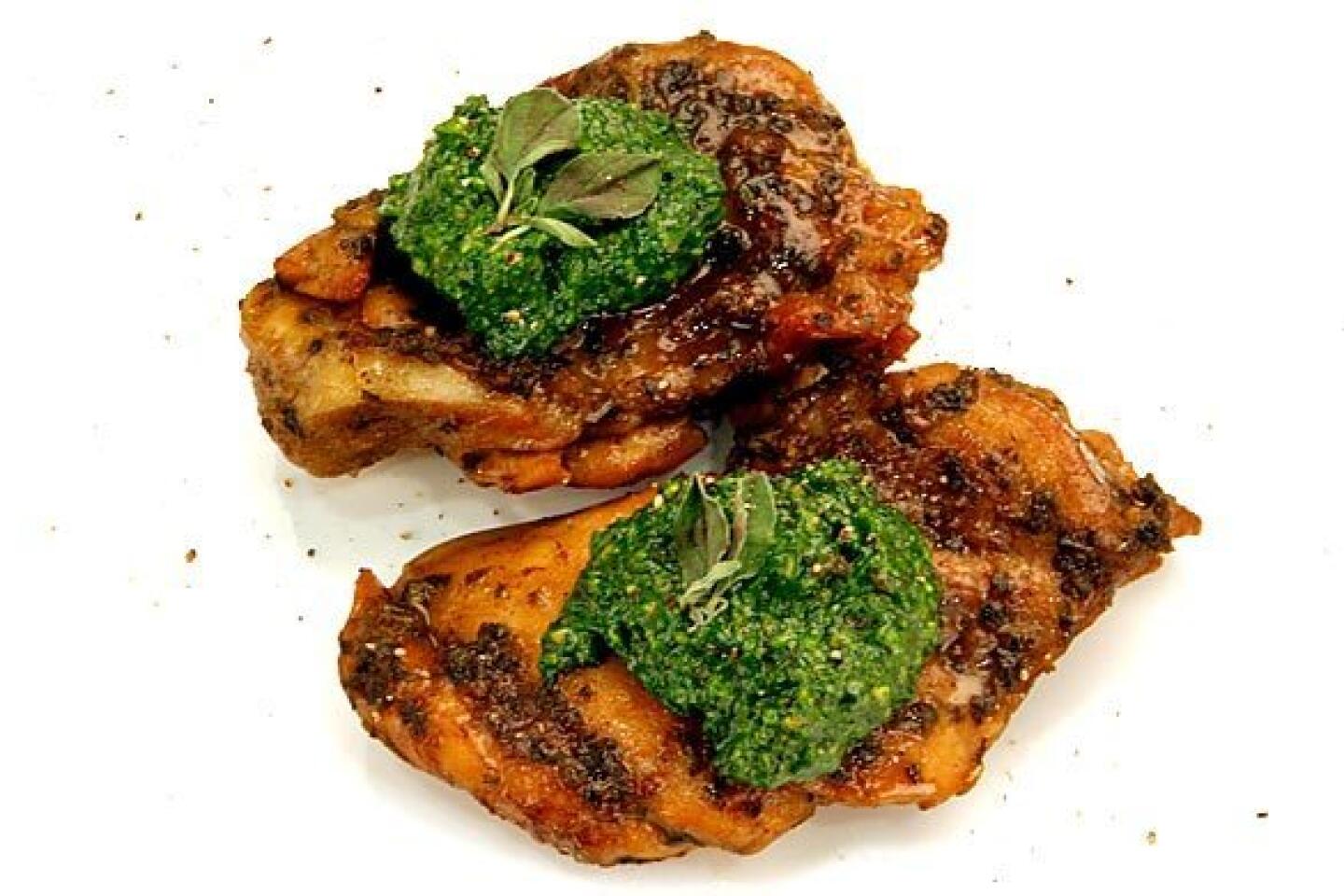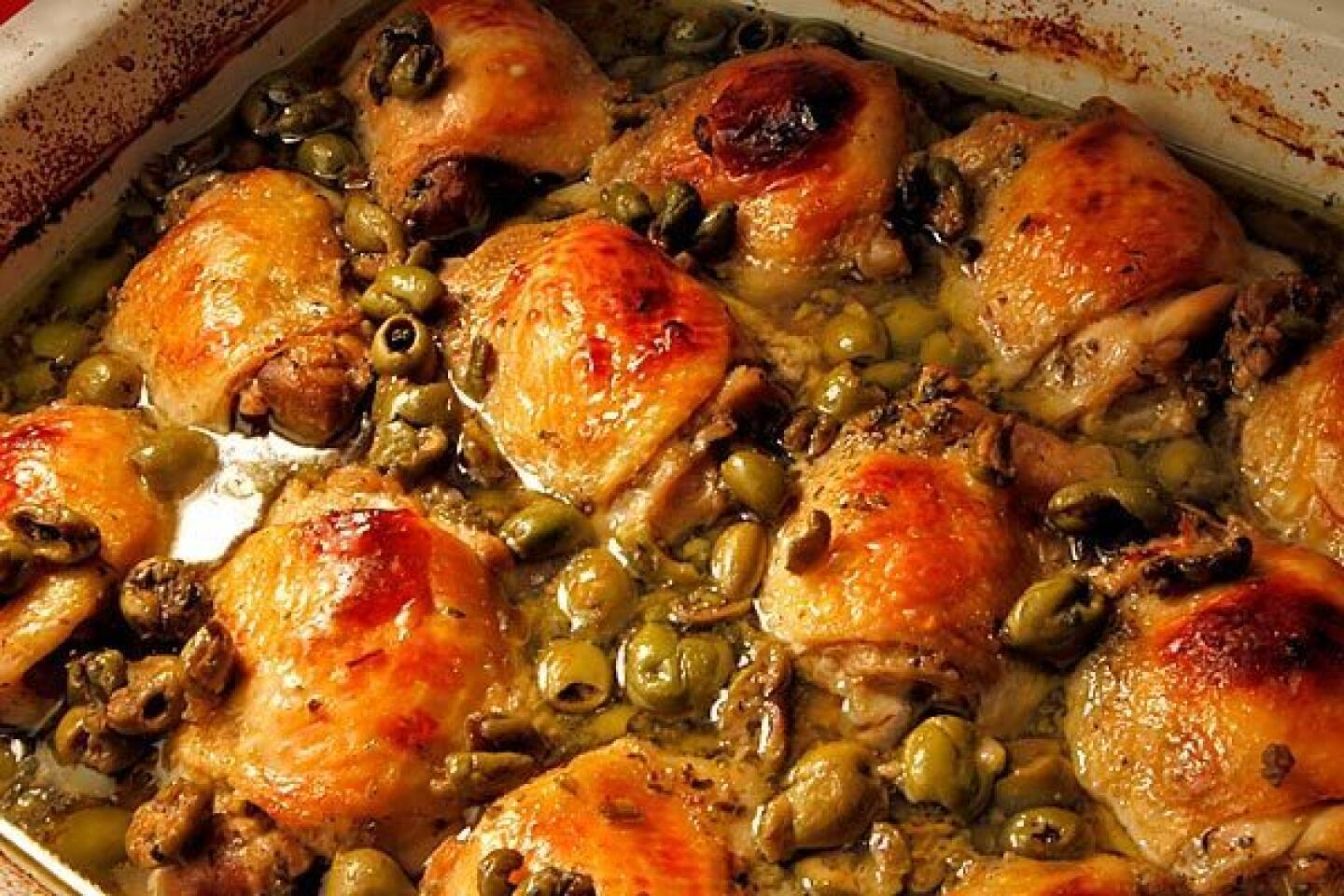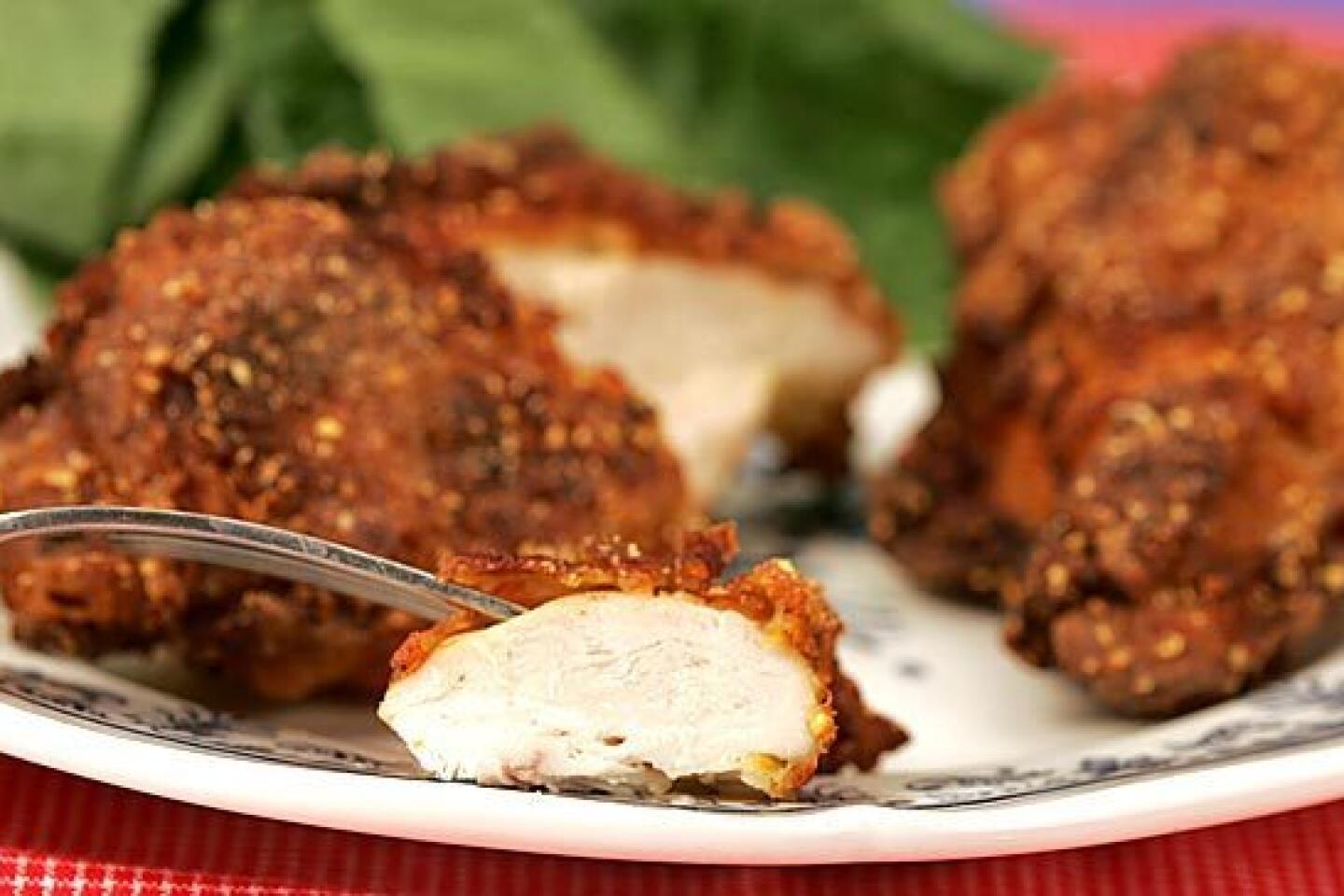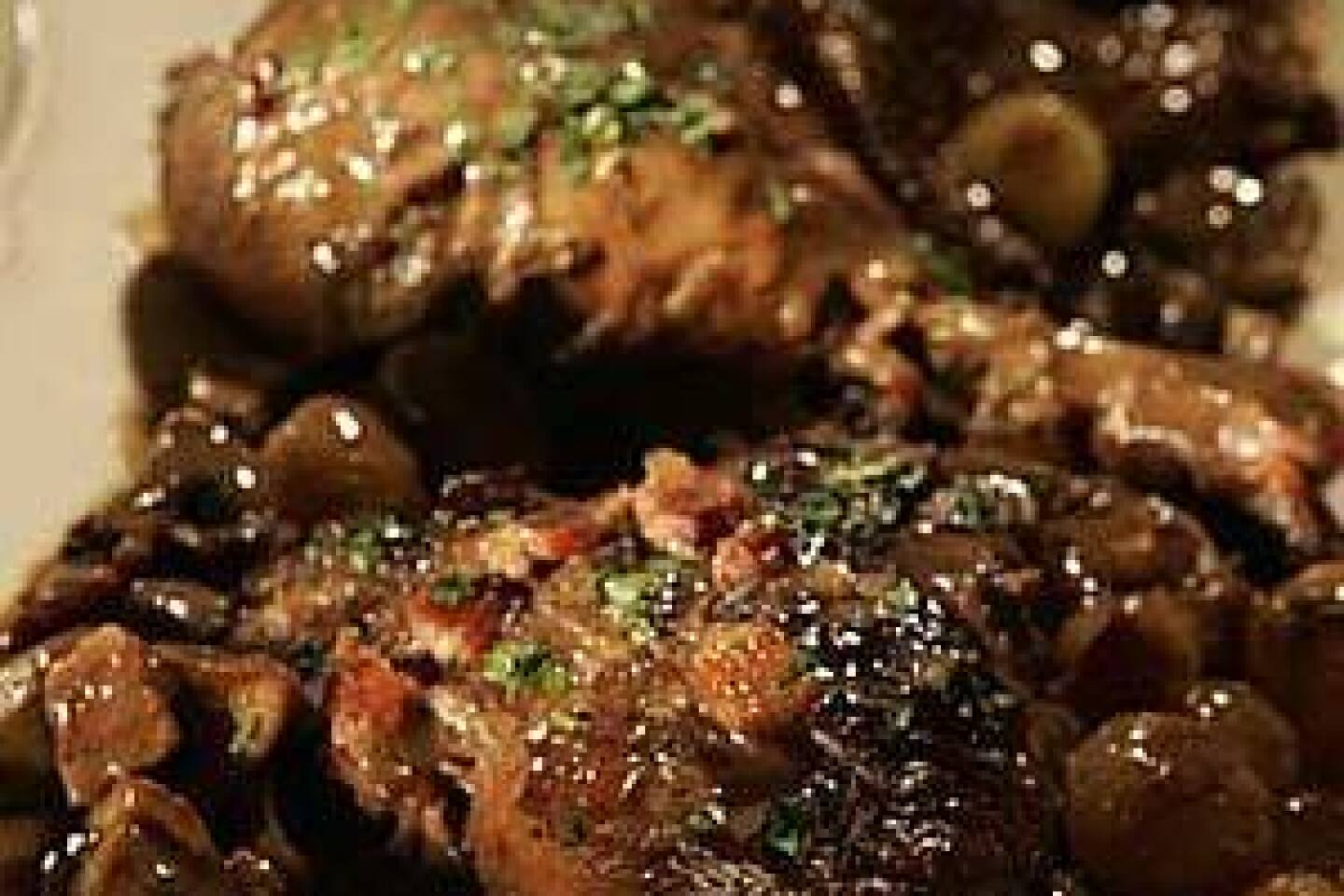Test Kitchen tips: When is chicken done? (plus 22 chicken recipes)
Recently, I received an email from Pam in Woodbury, Conn., inquiring about how to check chicken for doneness:
âMy husband and I are disagreeing as to whether our roast chicken is fully cooked.
âWhen we cut into the thigh, the juices run clear. And the leg wiggles easily. My husband says: All done! However, when I tip the chicken and let the juices run out of the body cavity, they are still red/pink. I say: Not done!
âPlease settle this dispute! I just want us and our family and guests to stay healthy!!! Thanks so much!â
RECIPES: 22 recipes for chicken from the L.A. Times Test Kitchen
Youâre roasting a chicken in the oven, and while it may look like itâs ready to eat, you have no idea if itâs actually done. What do you do?
Thereâs only one foolproof way to check for proper doneness, and that is using a thermometer. Chicken is done when a thermometer reaches at least 165 degrees. Slide the thermometer into the hip meat, in between the leg and breast; make sure the thermometer does not touch the bone, as this will give an artificially high reading (the bones heat faster than the meat).
Some of the methods Pam mentions above are helpful, though not necessarily the most accurate. If the meat is done, the joints should twist easily. Likewise, cooked chicken meat should feel firm when pressed, and the juices are often clear.
But what happens if we still see pink?
Weâve been taught that the meat should be white and the juices should run clear when chicken is done -- no pinkish coloring at all.
But color isnât always a good indication of doneness. Chicken can be done even when it is still a little pink.
This is especially true with young birds whose bones are still porous -- since the bones havenât completely calcified and hardened, pigment can seep through to the surrounding area, coloring the meat and liquids, and causing the bones themselves to darken.
And while the meat should not be overly pink or ârubberyâ-feeling (a good indication it still needs to cook), it meat might also remain a little pink even after cooking due to the hemoglobin in the tissue.
Invest in a thermometer. Itâs the one foolproof way to safely check for doneness.
These tips are not only good for chicken; theyâll work with all poultry.
If you have any kitchen tips or questions youâd like me to explore, leave a comment below or email me at [email protected].
ALSO:
Go behind the scenes at the Test Kitchen
134 recipes for your favorite restaurant dishes
Browse hundreds of recipes from the L.A. Times Test Kitchen
More to Read
Eat your way across L.A.
Get our weekly Tasting Notes newsletter for reviews, news and more.
You may occasionally receive promotional content from the Los Angeles Times.
